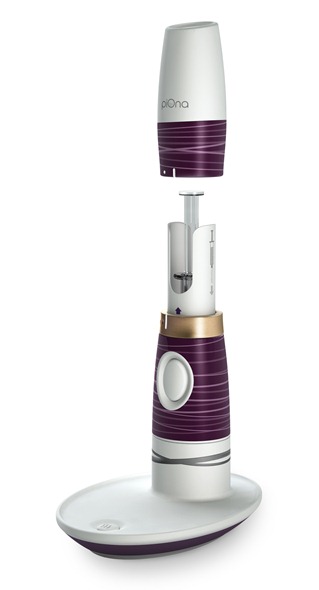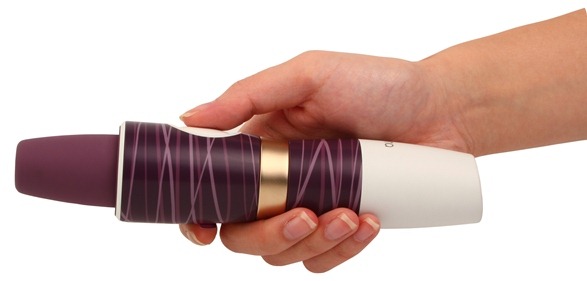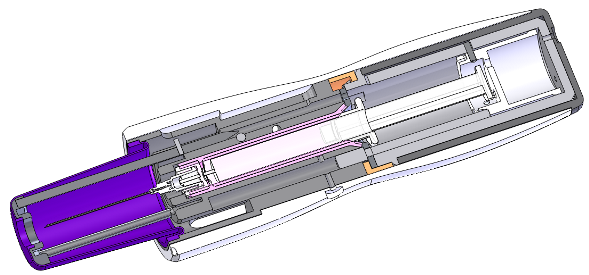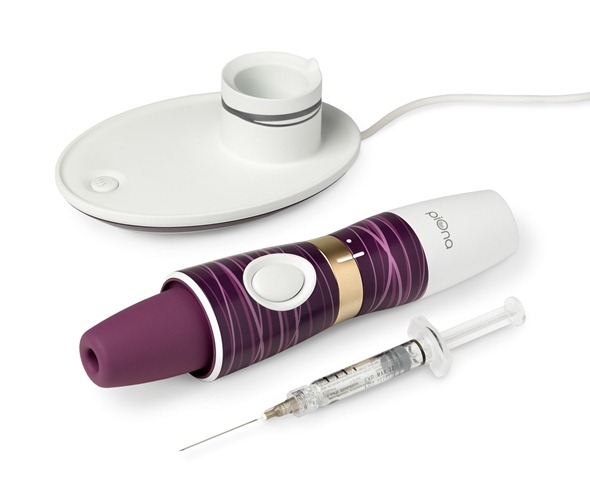During IVF treatment you will need to take certain drugs. For example, for IVF it will be Follicle Stimulating Hormones (FSH) which are used to stimulate the ovaries to produce a mature egg so that they can be fertilised externally and then put back into the womb. These drugs can sometimes lower women’s progesterone levels, which can then make the conditions in her uterus less favourable for implantation of the egg and for successful growth of the egg.
Progesterone is also used to sustain the pregnancy by preventing miscarriages because sometimes progesterone can decrease the response of the womb’s immune system so it will make the body more likely to accept the egg that has been implanted.
Why do some women need regular injections of progesterone in oil (PiO) as opposed to taking supplements in the form of pills or suppositories?
Injecting is one of a number of methods by which progesterone can be delivered to the body. Fertility experts actually regard the progesterone injections as the most efficacious method of delivery since progesterone is administered directly into the blood stream. When taken as suppositories, patients risk receiving a low dose because the progesterone can sometimes leak back out.
For some patients, injecting may be the most suitable delivery method due the risk of suffering a bad reaction to the other ingredients contained in pills. Or, if administration of suppositories is required several times a day, it may just be too inconvenient or messy.
How are these injections normally given?
Currently, the only way to perform the injection is by injecting intramuscularly through a long needle so that it goes deep into the muscle. Usually the nurse or physician would train women on how to do this, and then they would self-inject at home. If women are not comfortable self-injecting, then they may need assistance from their partner, for example. In the worst case, they may have to go back to the hospital regularly so that their nurse can administer it for them.
On YouTube there are quite a few videos of women showing how they self-inject, here is one example: www.youtube.com/watch?v=9sBiuFf8__s&feature=player_detailpage#t=42s
The injection is given into the upper buttock area and the injection site should be alternated between the left and right side for each injection. Some nurses advise women to warm up the PiO before injecting because it is very viscous and warming the drug makes it easier to inject.
To reduce pain and discomfort, nurses recommend inserting the needle into the upper buttock in a dart like motion. Because PiO is so viscous, it can take over a minute to inject all of the drug into the body.
Why are these daily injections often dreaded by patients?
The needle is an inch and a half long and has a large bore hole - it is 22-gauge so you can actually see the eye of the needle. This alone can be perceived to be painful and cause additional stress, especially if patients are scared of needles.
The injection site may also become sore and painful due to the invasive nature and frequency of the procedure, and the long duration required for the viscous drug to dissipate into the muscle. Incorrect needle insertion by inexperienced users may also cause the area to become sore and scar.
There are many usability issues involved with trying to reach such an awkward area to inject which may mean that self injection is not physically possible and women may need somebody else to help them inject.
It can also be inconvenient to prepare the progesterone for injection – warming up the drug.
Please can you outline the new auto-injector developed by Cambridge Consultants?
We have designed piOna, an auto injector device specifically for viscous drugs, to reduce the stress and discomfort involved in these manual injections by simplifying the whole process.
piOna - Easing the Pain
piOna sits in its dock and warms up the drug before each use. piOna controls the warming up procedure so that the drug is consistently warmed to body temperature for every use. Warming it up also gives a faster injection time because the drug is less viscous and will dissipate more quickly reducing the chances of injection site reactions.

piOna enables users to self-inject in areas which previously may have been too difficult for them to reach. The user just has to press the safety lock button and depress the device over the injection site to guide the needle through the skin. The device will then automatically deliver the drug.
As the needle and syringe are hidden from view, piOna provides constant feedback to inform the user that the drug is being delivered. There is both visual and audio feedback from the docking station and device to guide the user through the injection process. Due to the poor visibility of the injection site (upper buttock), the device also provides tactile feedback – a button pops out on the device to give the user positive confirmation when the injection and drug delivery is complete.

By hiding the needle, using tactile materials for areas that are in contact with the skin and employing a calming overall aesthetic, we are trying to reduce the perception of pain and discomfort. To load and prime piOna for use, you would open up the device, and drop in a standard needle and syringe (with the cap on). When the device is assembled, only the needle cap will protrude from the injection end of the device. The needle remains hidden from view after the needle cap is removed as it will be submerged inside the device. Similarly, when the injection is complete, the silicon needle cover retracts over the needle to prevent it from being visible.

How was this auto-injector developed?
We are always developing innovative medical devices including autoinjectors for major pharmaceutical companies but of course, all these activities are confidential because they are all client projects which are still under development. piOna is an internally funded project for us to showcase the exciting technologies and designs we can create.
piOna was designed and developed entirely in-house by a team of engineers, scientists and creative designers. We wanted to design a device in the autoinjector space that would demonstrate how our multidisciplinary skill-set helps us to develop solutions to improve the user experience of unpleasant injections. The progesterone injections used in fertility treatment have many usability problems that we wanted to solve. Currently, you can only inject manually and there are no other auto-injector aids to help you inject it.
To keep the user at the heart of the product development, I spoke with a number of fertility nurses to understand more about the problems women faced when injecting progesterone. I also read through many forums where women talked openly about their negative progesterone injection experiences. We conducted usability studies to determine the most comfortable method and position in which to hold a device to aide injections into the upper buttock.

Our engineers developed the electronics for the warming system, along with the injector mechanics to ensure that the system functions just as beautifully as the device looks and feels. Every single detail of the device from the pulsing amber warming light to the ceramic-like finish and understated gold collar was considered and designed to instil confidence in the user.
What impact do you think the auto-injector will have?
In addition to designing piOna to improve the user experience and comfort, I really wanted to challenge the aesthetics of medical products – why do medical products need to be white and look clinical? piOna’s jewel-like styling is non-threatening and desirable yet still inspires user trust. I think piOna is a great example of how industrial design and human factors can make medical products more approachable and intuitive to use.
Where are the piOna auto-injectors currently available from?
It is not available because it is a demonstrator that we have developed in-house to show our capabilities and to highlight how we can develop great products by designing with the user in mind.
Do Cambridge Consultants have any plans to develop similar auto-injectors for other types of patient who require self-injections?
Yes, autoinjectors are just one of the many exciting new products we develop with our clients to improve patient experience and compliance.
Where can readers find more information?
You can find more information on our website, which also has a link to an animation on how piOna works: http://www.cambridgeconsultants.com/
About Lai Chiu Tang
 Lai Chiu Tang is a Senior Industrial Designer at Cambridge Consultants. Lai manages and leads the product and packaging design across a range of products from medical to consumer.
Lai Chiu Tang is a Senior Industrial Designer at Cambridge Consultants. Lai manages and leads the product and packaging design across a range of products from medical to consumer.
Lai is a firm believer in user-centred design and always strives to create intuitive designs that enhance the user experience whilst not compromising on aesthetics.
In recent years, Lai has focused her skills on her passion for packaging design, with her most recent packaging design for a healthcare therapy kit being launched worldwide.